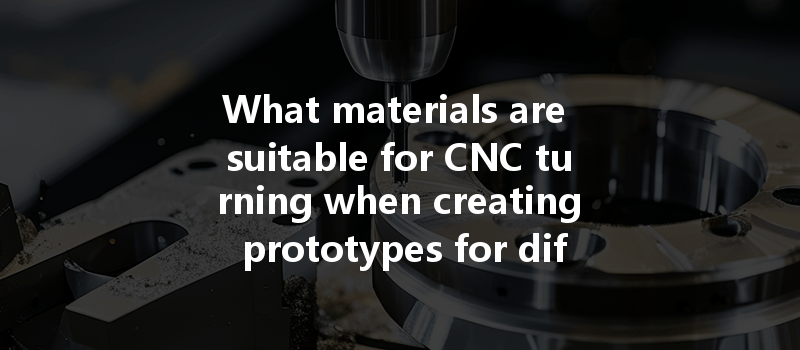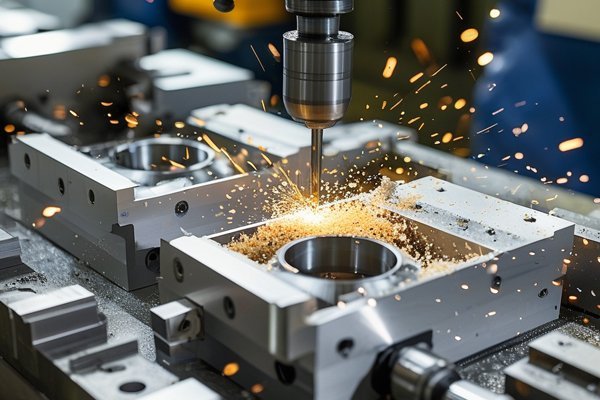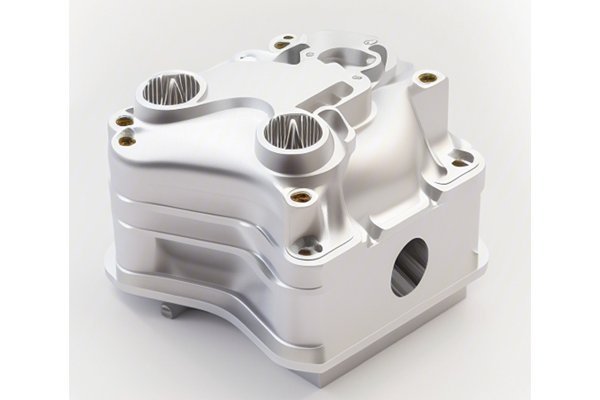Did you know that CNC machining is responsible for producing about 80% of the components used in modern manufacturing? This astounding statistic reflects how crucial CNC (Computer Numeric Control) machining has become in a variety of industries, ranging from aerospace to consumer electronics. With its precision and reliability, CNC turning has revolutionized the prototype creation process, making it faster and more efficient. But how do manufacturers select the right materials suitable for CNC turning to ensure that their prototypes perform optimally for their intended applications?
Choosing the correct materials for CNC turning is not merely a matter of availability or cost; it’s about understanding the unique properties that each material brings to the table and how they align with specific project requirements. In this blog, we’ll explore the various materials that are commonly used in CNC turning, highlighting their benefits and limitations, discussing their applications, and providing insights into making the right choice for your prototype needs.
The Fundamentals of CNC Turning
Before diving into the materials, let’s briefly revisit what CNC turning is and why it is a preferred method for prototype development.
CNC turning is a subtractive manufacturing process where a rotating workpiece is shaped by a cutting tool. This process is particularly effective for cylindrical parts and offers high accuracy and repeatability. The CNC machines automate this procedure, allowing for complex shapes and features to be created without the need for manual intervention. The result is a refined prototype that reflects the design specifications with remarkable precision.
Benefits of CNC Turning:
Selecting Suitable Materials for CNC Turning
Factors such as mechanical properties, thermal stability, corrosion resistance, and cost must all be considered when selecting materials for CNC turning. Here is a detailed analysis of the more common materials used in CNC turning for prototype development.
Aluminum Alloys
Properties:
Applications:
Commonly used in aerospace, automotive, and consumer products, aluminum alloys (such as 6061 and 7075) are among the most preferred materials for CNC turning. Their lightweight nature makes them ideal when reducing overall weight is crucial, as in aircraft components.
Stainless Steel
Properties:
Applications:
Stainless steel is available in various grades, such as 304 and 316, and is often used in the food processing, medical equipment, and oil and gas industries. Its ability to withstand high temperatures and corrosive environments enhances its utility in prototype development.
Brass
Properties:
Applications:
Brass is often used in making connectors, fittings, and musical instruments. Its antimicrobial qualities also make it suitable for applications in plumbing and healthcare.
Polypropylene (PP)
Properties:
Applications:
Common in consumer products, automotive applications, and packaging, polypropylene’s flexibility and robustness make it an excellent choice for prototypes requiring durability without added weight.
Polycarbonate (PC)
Properties:
Applications:
Polycarbonate is widely used in applications requiring high transparency, like light covers and lenses. It is also employed in safety gear due to its impact-resistant properties.
Acrylonitrile Butadiene Styrene (ABS)
Properties:
Applications:
Popular in consumer electronics casings, automotive parts, and building materials, ABS proves to be an ideal candidate for prototypes requiring additional aesthetic polish.
Carbon Fiber Reinforced Polymers (CFRP)
Properties:

Applications:
CFRP is often utilized in high-performance applications, such as aerospace and motorsports. Though more expensive, it offers unparalleled physical properties for specialized prototypes.
Material Selection Process for CNC Turning Prototypes
Selecting the right material for CNC turning involves a systematic approach. Here’s a breakdown of the key steps in this decision-making process:
Step 1: Define the Project Requirements
Before even considering materials, clearly outline the specifications and requirements of your prototype. Questions to address include:
Step 2: Assess Material Properties
Once you have a clear idea of the requirements, identify materials that possess properties suitable for your needs. Reference material properties such as strength, toughness, weight, machinability, and corrosion resistance.
Step 3: Analyze Cost and Availability
While some materials may offer ideal properties, the associated costs, and availability can significantly influence your choice:
Step 4: Consult Manufacturing Capabilities
Collaborating closely with your CNC machining provider is essential. Ensure they have the right tools and expertise to effectively work with your selected material, as some materials may require specialized equipment or tooling.
Step 5: Prototype Testing and Iteration
Once a material is chosen, create a prototype. Monitor its performance during testing to confirm its suitability. If shortcomings arise, be prepared to re-evaluate your material selection and make necessary iterations.
Case Studies: Selecting Materials for Successful Prototypes
Case Study 1: Aerospace Component Prototype
Project Requirements:
Lightweight, high strength, and excellent corrosion resistance.
Selected Material:
Aluminum Alloy
The CNC-milled 7075 aluminum prototype met stringent aerospace industry standards, demonstrating high durability under stress.
Case Study 2: Consumer Electronics Housing
Project Requirements:
Aesthetic appeal, impact resistance, and cost-effective production.
Selected Material:
Acrylonitrile Butadiene Styrene (ABS).
Outcome:
The ABS prototype provided an attractive finish while maintaining the required mechanical properties, leading to a favorable market reception.
Case Study 3: Custom Automotive Part
Project Requirements:
High temperature tolerance and corrosion resistance.
Selected Material:
Stainless Steel
The automotive component effectively performed in high-temperature environments, showcasing the material’s resilience.
Common Challenges and Solutions in Material Selection for CNC Turning
Challenge: Material Availability
In situations where a preferred material is not available, this can lead to project delays.
Solution:
Establish a robust supply chain and build relationships with multiple suppliers. Diversifying your options may unlock alternative materials that meet your performance criteria.
Challenge: Cost Limitations
Prototype manufacturing can become prohibitively expensive if high-performance materials are prioritized without considering the budget.
Solution:
Evaluate the manufacturing process and assess whether modifications could allow using a less expensive material while still achieving desired properties.
Challenge: Misalignment of Material Properties
Sometimes, a material that seems suitable may not perform as anticipated once prototyped.
Solution:
Conduct a thorough market analysis and consult experts in material science to better understand the choices at hand prior to selecting a material.
Challenge: Lack of Informed Guidance
Individuals may struggle with material decisions due to a lack of expertise or familiarity with specific properties.
Solution:
Engage with CNC machining experts or material specialists who can offer insights and guide the selection process.
Choosing the right material for CNC turning when creating prototypes is a critical step that can significantly impact the success of a project. From understanding the mechanical properties to analyzing cost and availability, material selection requires careful consideration and a structured approach.
By following a systematic decision-making process and leveraging case studies and expert insights, you can ensure that your prototypes not only meet but exceed the performance expectations set out for them.
In the ever-evolving landscape of manufacturing and technology, staying informed about materials and their applications will enhance your projects, leading to innovation and success in your respective fields. Don’t underestimate the power of material choice; it’s the foundation upon which effective and efficient prototypes are built. It’s worth thinking about how each decision you make can serve as a stepping stone toward achieving your ultimate project goals.






